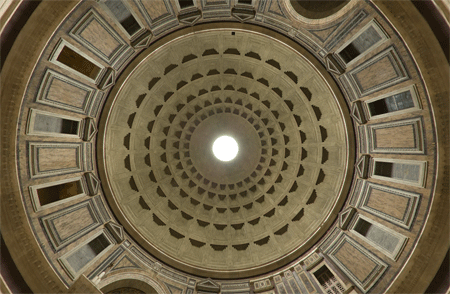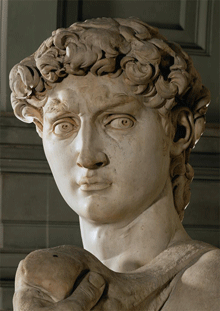If I Knew Then What I Know Now

Pantheon; Interior view #1 | 118-126 CE | QTVR Panoramas of World Architecture (Columbia University) | Visual Media Center; learn.columbia.edu
By Dana Howard
True confession: I was a sporadic—and inattentive—user of the Artstor Digital Library. My high school was a fairly early adopter of Artstor. I used it a lot on those early years, but as I had more and more of my slides “in the can,” I stopped paying attention to the changes taking place in the Digital Library.
I would periodically run to Artstor when I was asked to do presentations at the last minute, (I found the ability to do a quick download of Image Groups to PowerPoint very helpful), but for the most part I was too busy to explore new tools and new collections as they were announced. I think I was typical for a high school user; I was busy teaching and felt constantly bombarded with new resources elsewhere.
I did notice the quality of the images was vastly improving and that the image data was becoming more standardized, but I was too much in a rush to see some of the cool things that I have since discovered. For example, I could have been clicking on the Associated Images icon ![]() to find those works others have chosen when they picked the one I was exploring. I now find that extremely useful.
to find those works others have chosen when they picked the one I was exploring. I now find that extremely useful.

Michelangelo Buonarroti | David; detail of head, front view | 1501-04 | Galleria dell’Accademia (Florence, Italy) | Image and original data provided by SCALA, Florence/ART RESOURCE, N.Y.
artres.com ; scalarchives.com | (c) 2006, SCALA, Florence / ART RESOURCE, N.Y.
Another (embarrassingly) true confession: I actually assumed there were no details of Michelangelo’s David in the Digital Library. Yes, I was in a rush. With my frantic teaching load I did not take the time to notice the Clustered Images icon ![]() that would reveal all those great details, along with duplicate images from other contributors.
that would reveal all those great details, along with duplicate images from other contributors.
Had I noticed the QuickTime Virtual Reality videos (QTVRs) ![]() from the QTVR Panoramas of World Architecture (Columbia University), I would have used them earlier. The one on the Pantheon in Rome is fantastic for conveying to students the geometric perfection of that structure. It can make South Carolina seem not so far from Rome after all. And speaking of traveling in the classroom, the caves captured in the Mellon International Dunhuang Archive are the best way I have since found to immerse a classroom in a sacred space at a distance. A related resource that I did not know about is three dimensional images
from the QTVR Panoramas of World Architecture (Columbia University), I would have used them earlier. The one on the Pantheon in Rome is fantastic for conveying to students the geometric perfection of that structure. It can make South Carolina seem not so far from Rome after all. And speaking of traveling in the classroom, the caves captured in the Mellon International Dunhuang Archive are the best way I have since found to immerse a classroom in a sacred space at a distance. A related resource that I did not know about is three dimensional images![]() of sculpture in the round from the Musée National des Arts Asiatiques–Guimet (also in the Mellon International Dunhuang Archive). It is so difficult to explore sculpture in the classroom with static images, but these rotate, which allows you to discuss all sides of a work of art—as well as zoom in and out.
of sculpture in the round from the Musée National des Arts Asiatiques–Guimet (also in the Mellon International Dunhuang Archive). It is so difficult to explore sculpture in the classroom with static images, but these rotate, which allows you to discuss all sides of a work of art—as well as zoom in and out.
If you have at all been like me, take a few minutes to explore these resources within Artstor. Search the Artstor Digital Library for QTVR or 3D and click on the logos under the thumbnails to see these resources for yourself (and take a look at the Help Wiki to learn more). They can create that moment in the classroom where students gasp in awe or, even better, finally understand something that words fail to adequately express. It is those moments that remind us what we loved about our subject when we first started teaching. It is those moments that make teaching a profound experience.
A final confession: I did not understand that Artstor is not a static resource, it is dynamic. The people at Artstor are always working on new ways to bring the Artstor Digital Library alive for the teacher and the student. So please explore. Discovery is the fun part of teaching, even for an overworked high school teacher.